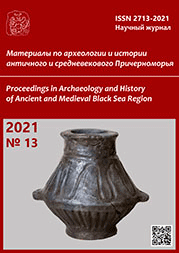Some Notes on Proper Names and Official Titles in the Mongɣol-un niɣuca tobčiyan: inal/inanča/inaq
Some Notes on Proper Names and Official Titles in the Mongɣol-un niɣuca tobčiyan: inal/inanča/inaq
Author(s): P.D. Buell, K. ErkSubject(s): History, Language and Literature Studies, Philology
Published by: Нижневартовский государственный университет
Keywords: Mongɣol-un niɣuca tobčiyan; Middle Mongolian; personal name; title; *ına-;
Summary/Abstract: Mongɣol-un niɣuca tobčiyan, the “Secret History of the Mongol,” is the only work of its kind from the era of the Mongolian world Empire, it has a complex history as a text but was originally written in (Middle) Mongolian. It is a linguistically very rich source, not only for the Mongols but for many other groups who are seen allied with or appear fighting against the Mongols, the latter bearers of the power of Eternal Heaven and of the potent sanction of the ancestors. Thus, in addition to overt political assertions to guide the new Mongolian Empire, and its rulers’ managers, and commanders, and containing carefully selected and crafted statements of events of myth and history. These are designed to buoy up the imperial state of affairs and Mongolian society in general, Adapted documents and even works of a literary character are among the devices used to this end. Given its nature, it is only to be expected too that the “Secret History” also is a rich source of a full history behind the scenes of told by the personal names and epithets, and titles of Mongols, but also the names, epithets, and titles of many non-Mongols who had military, political and diplomatic contacts with the Mongols in the early 13th century. These names, epithets, and titles tell entirely their own story. Thus, grasping their potential importance, these names, epithets and, titles have been studied by many researchers, from a variety of perspectives. Here, we, a Mongolist and a Turkologist, have banded together, to follow in the footsteps of these investigators who have gone before, offering our historical-comparative analysis of the related words inal/inanča/inaq, and their semantic and morphological structure, examined within a larger context of the “Secret History” and its monumental, literary linguistic and cultural world. Our analysis will be primarily based on the “Secret History,” but also on other historical texts and documents, as well as information offered by Mongolists, but also provided by those in closely related disciplines, in Turkology in particular, for example, this is only natural since Mongols and Turks closely interacted in building an empire, and the new, often mixed cultures that emerged from it.
Journal: Материалы по археологии и истории античного и средневекового Причерноморья
- Issue Year: 2021
- Issue No: 13
- Page Range: 841-851
- Page Count: 11
- Language: English

